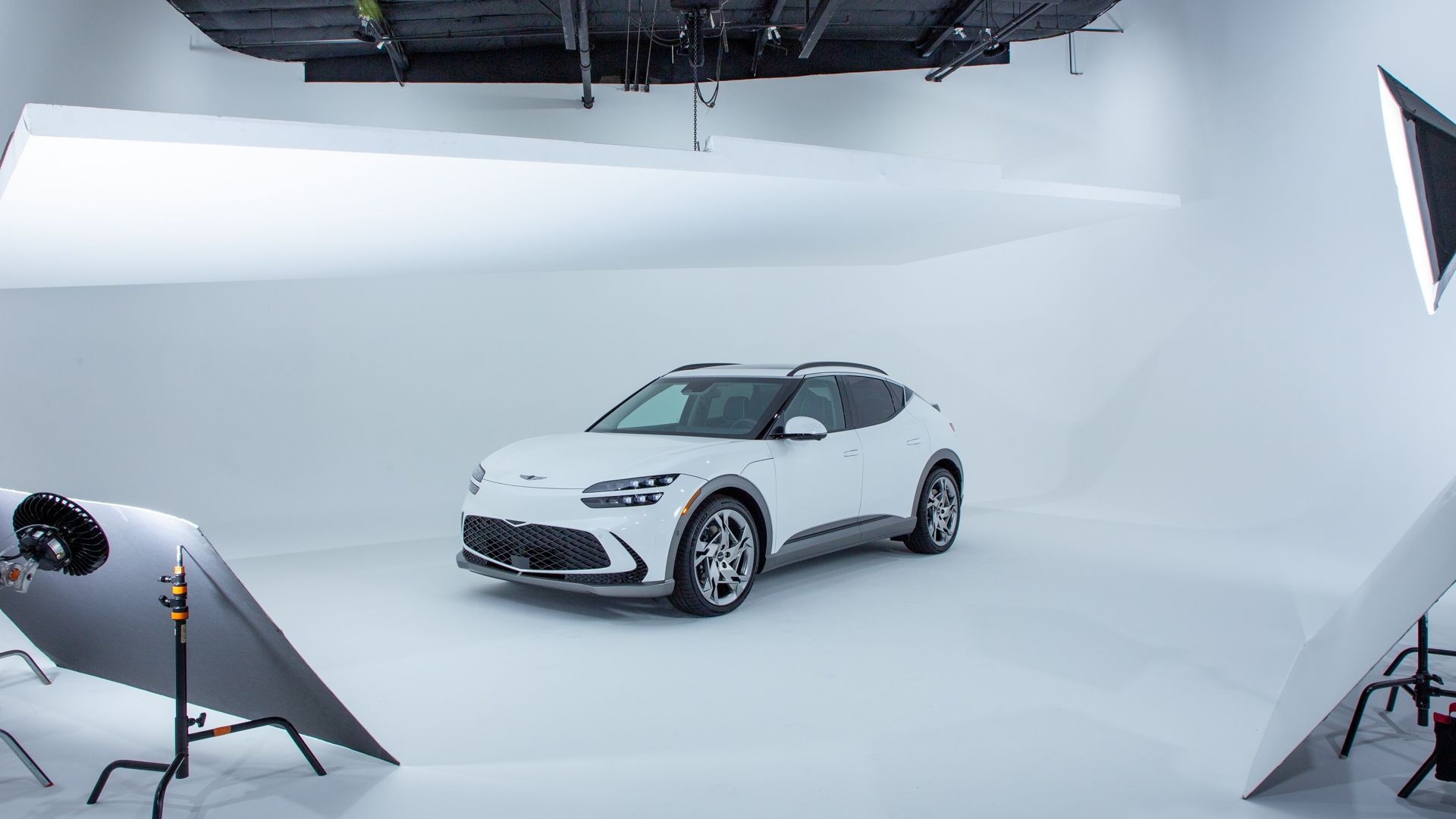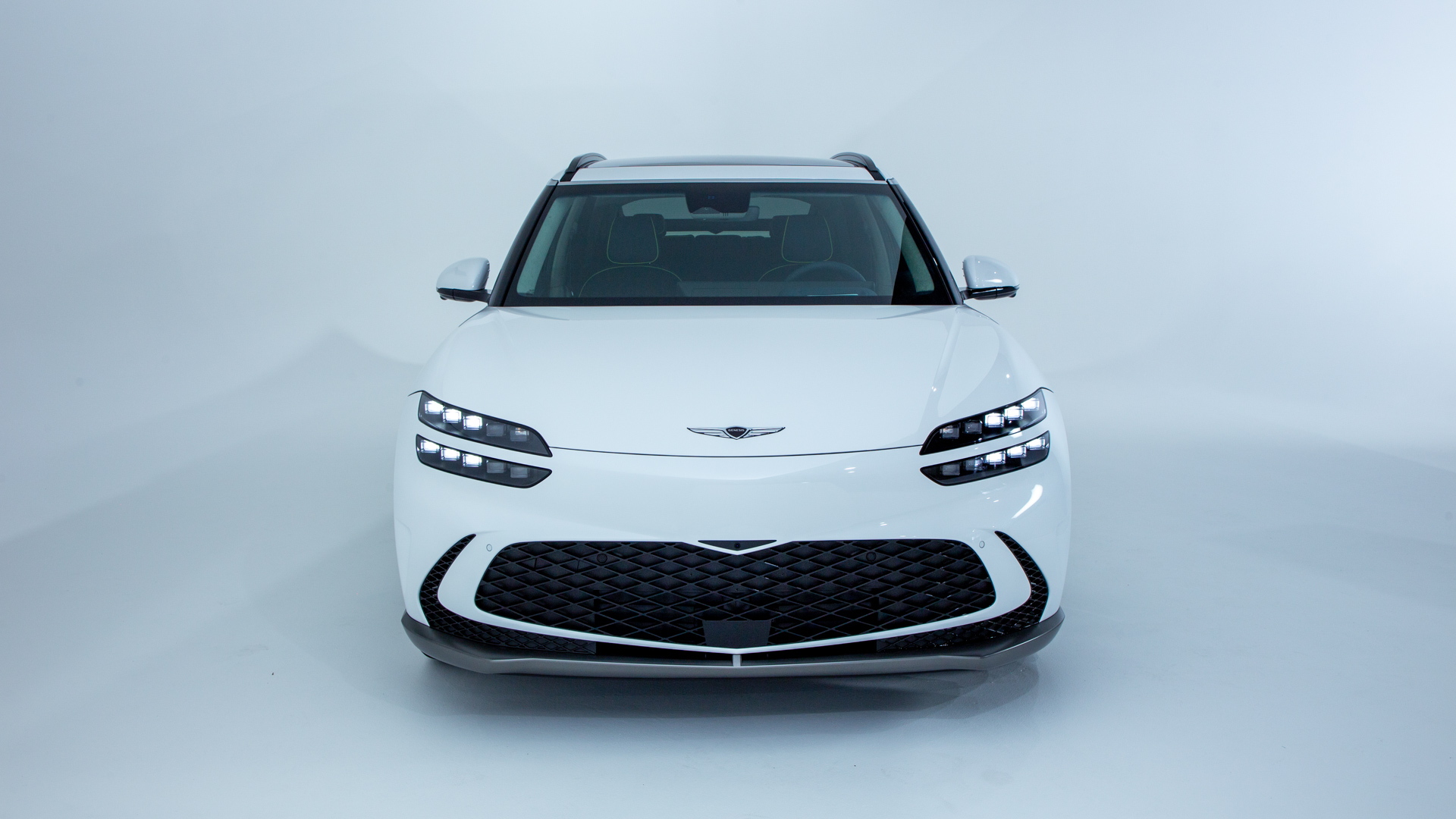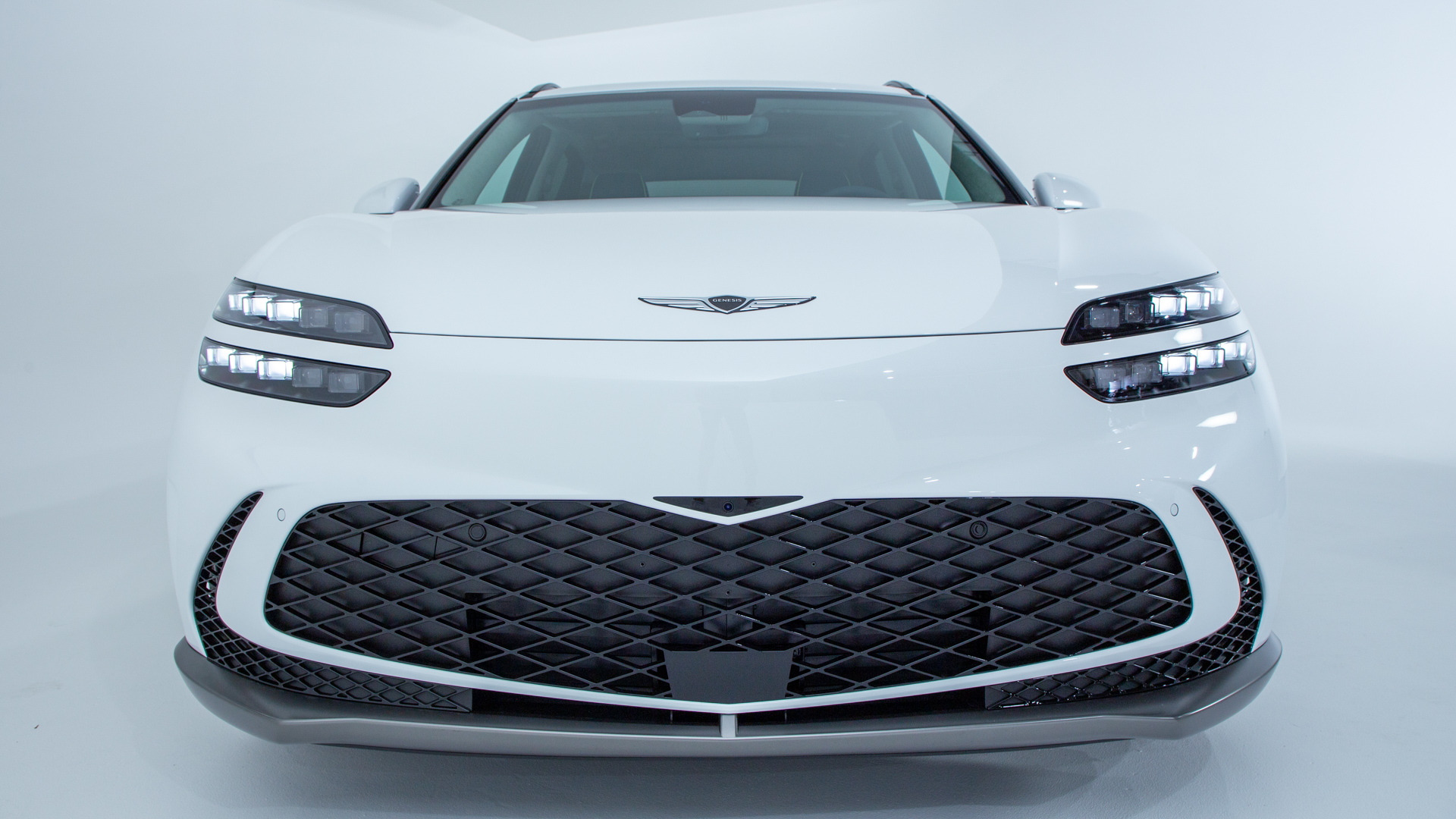Following in the footsteps of the more mainstream Hyundai Ioniq 5 and Kia EV6 is the 2023 Genesis GV60, the third vehicle revealed from the Korean automakers to ride on their shared E-GMP modular platform.
The GV60 is why I was recently in Orange County, Calif. again near Hyundai’s headquarters (at the same studio in which I saw the Ioniq 5). With those other two models fresh in mind, how would the most luxurious of the three models stack up?
Up close, the GV60’s styling details impress and it will offer a few distinct features that set it apart from not only its relatives, but the rest of the pack of electric compact SUVs. Those features include the ability to unlock and drive it away without a key or a phone and a hidden “drift mode” that promises hijinks of a sideways kind.
Genesis didn’t clarify many of the upcoming SUV’s details, we still don’t know the exact U.S. specifications for the powertrain or many of the vehicle’s dimensions. But what I saw and the few nuggets that were gleaned make me more optimistic about what the GV60 will offer.

2023 Genesis GV60

2023 Genesis GV60
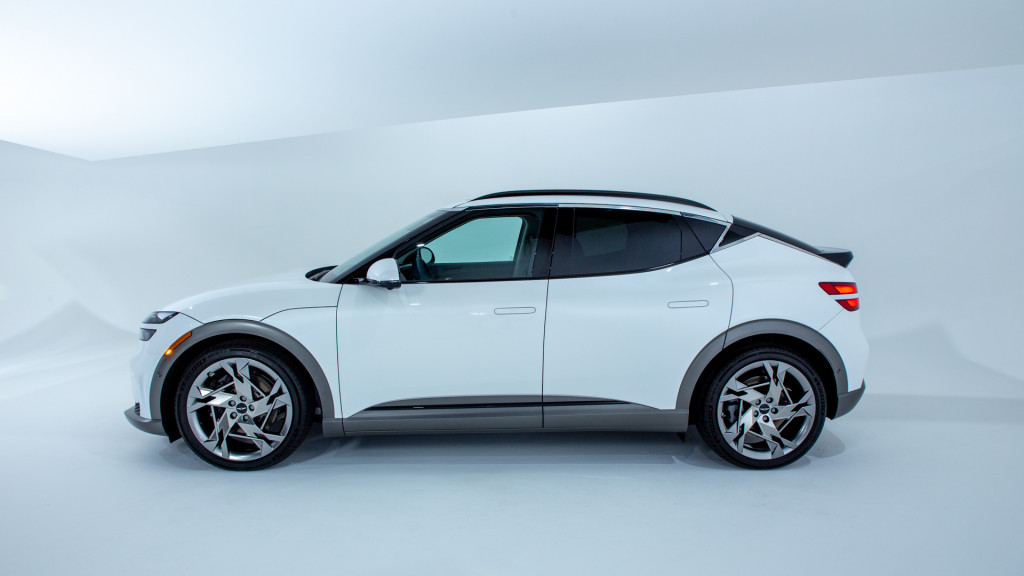
2023 Genesis GV60
The GV60 on display didn’t wear the same eye-catching neon yellow/green paint shown in the GV60’s introductory photos, instead looking more composed while dressed in white. It’s similar in overall size to the Hyundai Ioniq 5 and the Kia EV6 as you might expect, even though the wheelbase is slightly shorter than the Ioniq 5.
Styling fits with the rest of the Genesis lineup, with the two rows of stacked headlights and the pentagonal grille that is the brand’s signature. Within those headlights, each of the LED elements is individually replaceable, so if one burns out the whole unit doesn’t have to be replaced. It does look more futuristic than the GV70 and rides noticeably lower. A prominent ducktail rear spoiler sits below the rear window and houses a wide bar for the brake light. Unlike the photos we saw before of the GV60 prototype, there were conventional side mirrors instead of cameras.
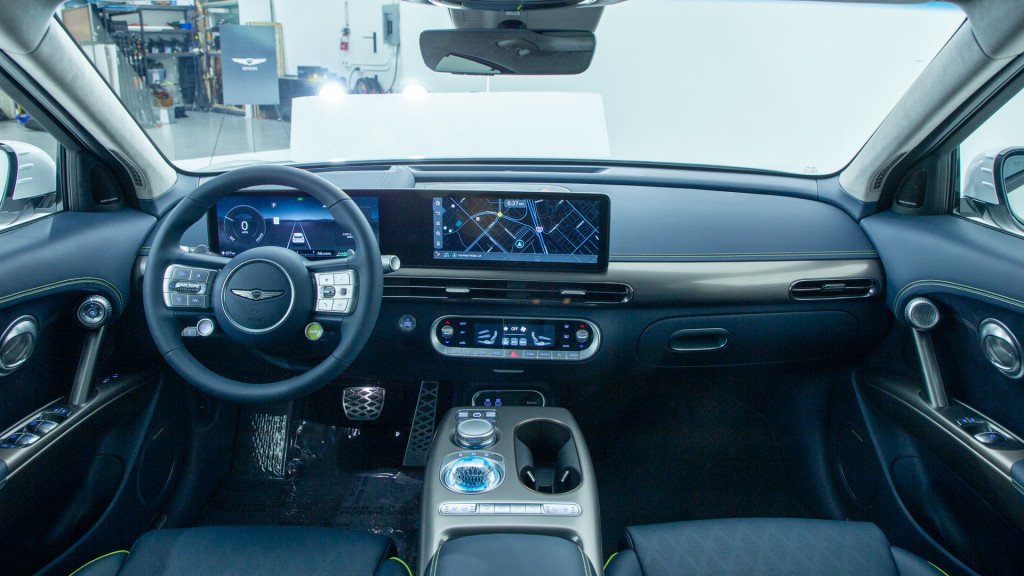
2023 Genesis GV60
For its size, the GV60 offers an impressively sized interior. It has the same feeling of open space that the Ioniq 5 offers thanks to a fixed panoramic glass roof, and there was plenty of rear legroom and headroom for my five-foot-11 frame. The GV60 has more passenger volume inside than the GV70 even and having sat in both vehicles, I’d prefer the GV60’s backseat for any kind of longer trip.
Genesis says that after the E-GMP platform was developed, their designers and engineers went their own way from Hyundai/Kia and that everything on the interior is unique to the GV60. The layout of the side-by-side screens up front look familiar to the ones shown in the other two vehicles, but the multimedia system has been reskinned and feels unique to Genesis (and it avoids the weird white/black background disconnect seen in the Ioniq 5 between its two screens).
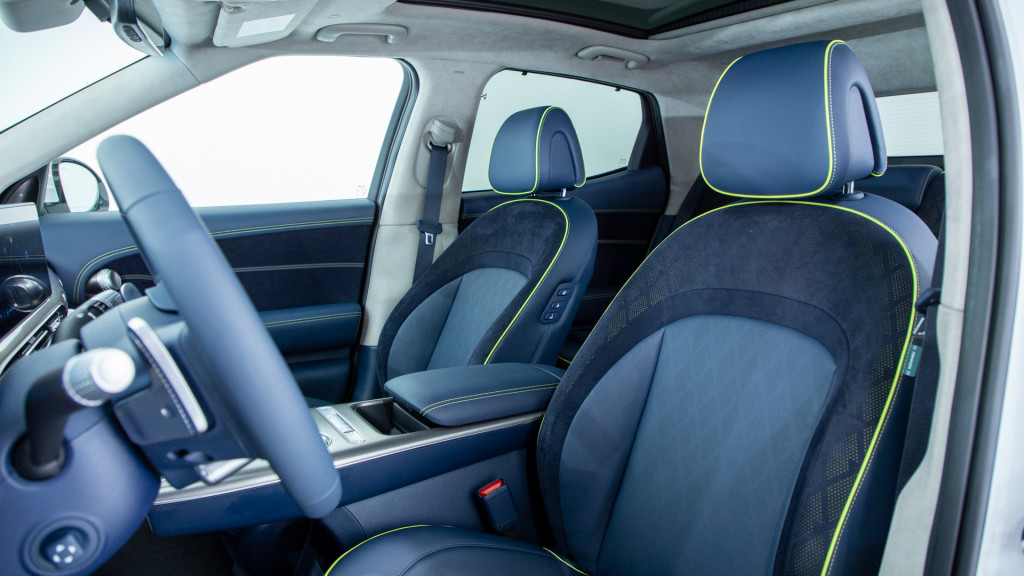
2023 Genesis GV60
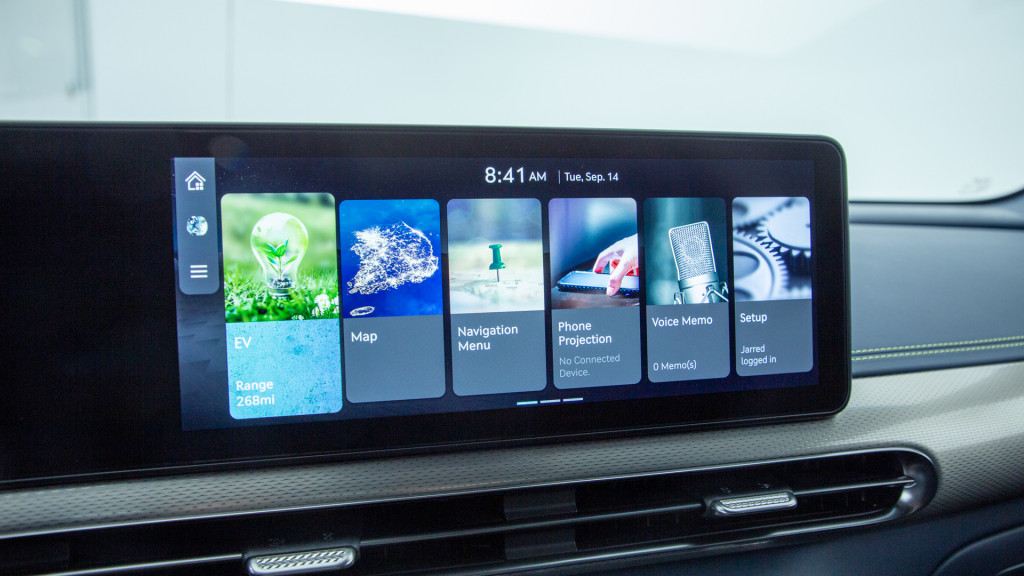
2023 Genesis GV60

2023 Genesis GV60
The cabin details and materials on the Genesis are a clear step above the Ioniq 5 and EV6, with an eye-catching blue color scheme in the display vehicle I saw with electric green stitching throughout. Leatherette covers the dashboard and doors, while the seats themselves get real leather. The interior’s centerpiece is a glowing glass sphere that’s displayed in the center console when the GV60 is off, in a color chosen by the driver. When the vehicle is turned on, the sphere flips over to reveal a rotary shifter that allows the GV60 to be driven. The sphere also won’t turn over if the vehicle is being charged, just as other EVs won’t let you shift out of Park..
Though the center console doesn’t slide forward and back as it does in the Ioniq 5, it still offers plenty of useful storage space and a large open area in front of it that is perfect for storing a larger purse or bag. And if you want to relax, the front passenger seat can fully recline and lean back for a nap or to get a view of the sky through the glass roof. This will also be the first Genesis vehicle to feature a Bang & Olufsen sound system.
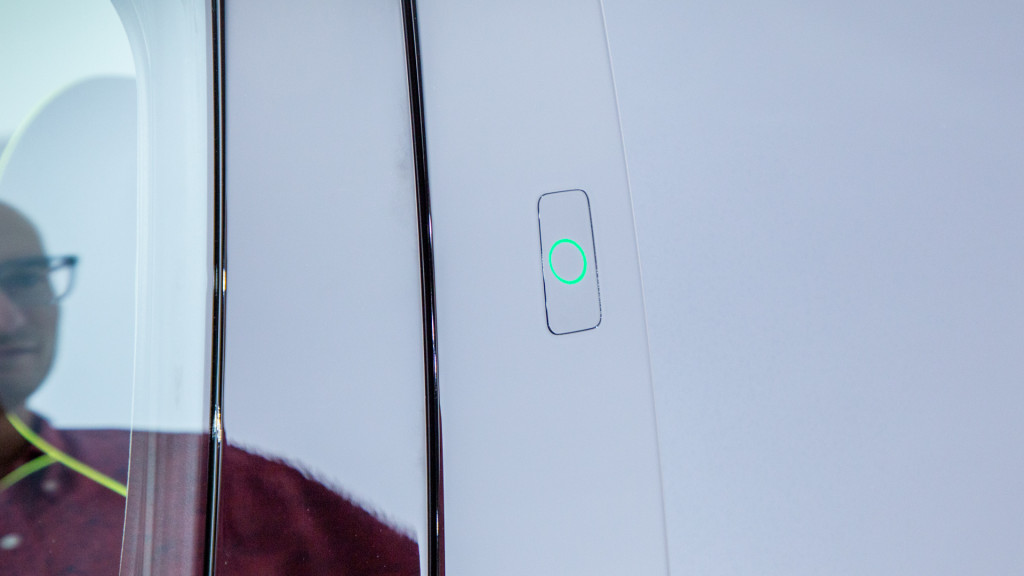
2023 Genesis GV60
The GV60’s best trick is that you don’t need a key or a phone to unlock the vehicle and drive away. Genesis calls the unlocking system “face connect” and it uses facial recognition via a small camera tucked into the B-pillar to unlock the GV60. Once inside, it can then be started via a fingerprint sensor in the center console. Up to two profiles and one guest profile can be stored, but it’s unclear at this time if that’s the maximum number of people that can be given permissions. Or if it will be possible to allow children, for example, to be able to unlock the vehicle but not start and drive it.
Genesis served up the same charging statistics for the GV60 (matching those of the Ioniq 5 and EV6): 10 to 80 percent in 18 minutes via quick charging, or 60 miles of range in five minutes. As for performance, we know that the Kia will claim a 0-62 mph time of just 3.5 seconds from a dual-motor system making a combined 577 hp and 546 lb-ft. We’d expect Genesis to at least offer something similar to this setup given its status and likely price premium over the other two vehicles.
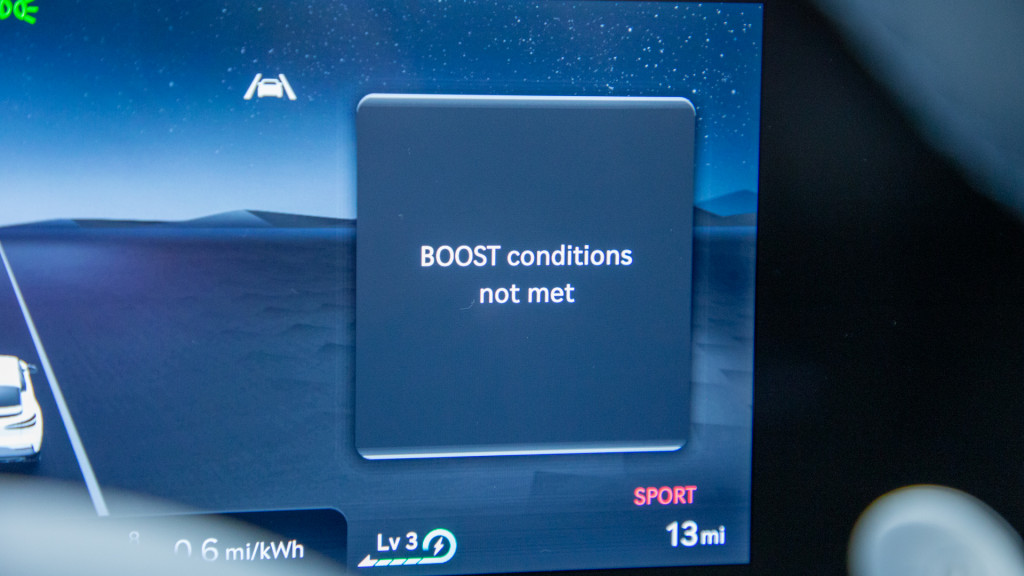
2023 Genesis GV60
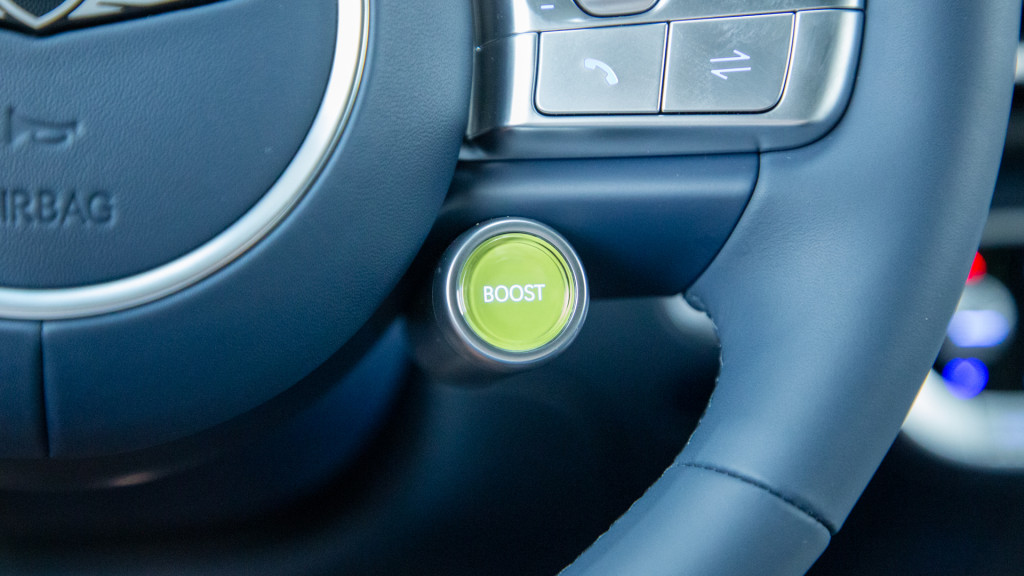
2023 Genesis GV60
The electric green button on the steering wheel that says “BOOST” on it will trigger a higher performance mode and bump output by an additional 180 kw. That’s not the only way to have fun in the GV60, holding down the right paddle shifter for three seconds will activate the hidden drift mode. It will only be available under certain conditions and Genesis is keeping those hush-hush for now, saying only that it will loosen up the traction control to allow for more enthusiastic expression from behind the wheel.
Hands-on, the GV60 impresses with its design and materials, enough so that it doesn’t feel like a gussied up version of the Ioniq 5 and stands alone. The 2023 GV60 will launch in Korea first during this year, then become available in the U.S. in 2022. Keep an eye out for pricing and other details closer to next year.


